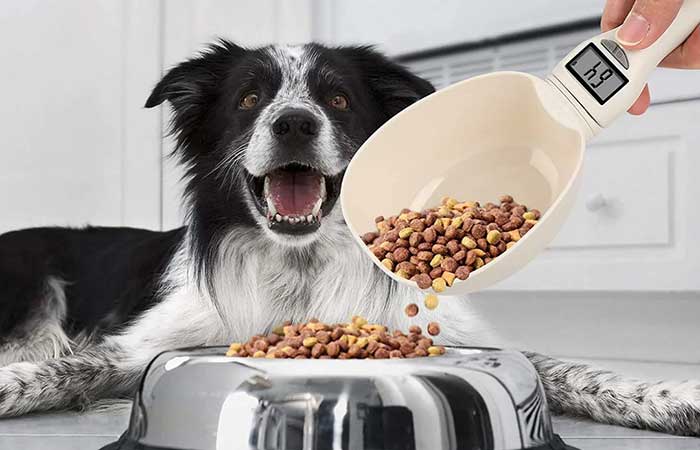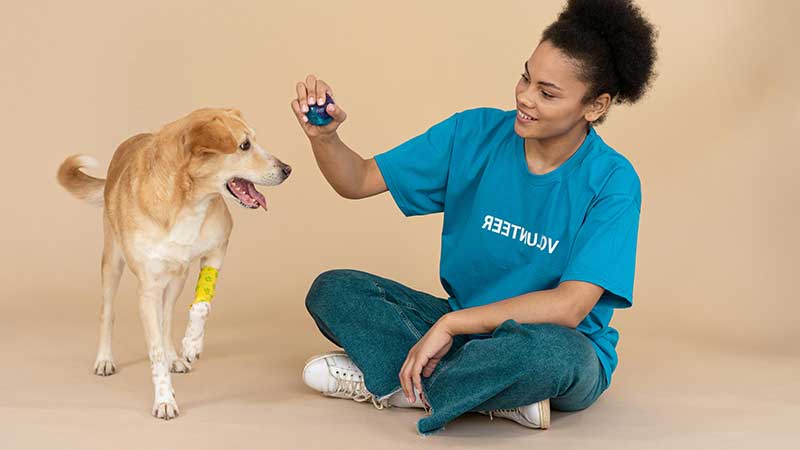The journey of dog care extends far beyond providing basic necessities – it’s about creating an environment where your four-legged companion can truly thrive. Initially, many pet owners focus solely on fundamental care aspects; however, comprehensive dog care encompasses a much broader spectrum of attention and dedication. Furthermore, when implemented correctly, proper dog care techniques can significantly enhance your pet’s quality of life and longevity.
The Science Behind Effective Dog Care
Research consistently demonstrates that dogs receiving holistic care live approximately 15-20% longer than those getting only basic attention. Consequently, understanding the intricate details of dog care becomes crucial for pet owners. Moreover, this comprehensive approach includes several key components:
- Balanced nutrition tailored to life stages
- Regular physical activity and mental stimulation
- Preventive healthcare and wellness monitoring
- Emotional support and behavioral training
Essential Components of Daily Dog Care
Establishing a robust dog care routine requires attention to various interconnected elements. First and foremost, proper nutrition forms the foundation of your pet’s health. Subsequently, regular exercise helps maintain physical fitness, while mental stimulation prevents behavioral issues. Additionally, consistent grooming practices contribute significantly to your dog’s overall well-being.
Advanced Aspects of Dog Care and Wellness
Beyond basic care, understanding your dog’s emotional needs plays a vital role in their development. Similarly, recognizing stress signals and addressing them promptly can prevent numerous health issues. In addition, maintaining a consistent schedule helps your dog feel secure and reduces anxiety-related behaviors. As a result, this comprehensive approach to dog care creates a stronger bond between you and your pet.
Long-term Benefits of Proper Dog Care
Implementing thorough dog care practices yields remarkable long-term results. For instance, dogs receiving comprehensive care show fewer behavioral problems and maintain better health throughout their lives. Furthermore, these practices often lead to reduced veterinary costs and increased life expectancy. Therefore, investing time and effort in proper dog care ultimately benefits both you and your beloved pet.
Section 1: Nutrition & Diet – The Foundation of Health

Proper nutrition serves as the cornerstone of your dog’s health, directly influencing everything from energy levels to coat quality and even lifespan. Understanding how to navigate the world of dog nutrition can seem overwhelming, but breaking it down into manageable tips makes it easier to provide optimal nutrition for your furry friend.
Tip 1: Choosing High-Quality Dog Food
When it comes to selecting the right food for your dog, quality matters significantly. Premium canned dog foods often provide excellent nutrition, especially when combined with dry kibble. The key lies in understanding food labels and identifying quality ingredients. Look for foods where real meat is listed as the first ingredient, rather than meat by-products or fillers.
- Ensure the food meets AAFCO (Association of American Feed Control Officials) standards
- Consider your dog’s life stage (puppy, adult, senior)
- Factor in any specific health conditions or dietary restrictions
Tip 2: Understanding Portion Control and Feeding Schedule

Proper portions prevent obesity, a condition affecting nearly 56% of dogs in America. Creating a consistent feeding schedule helps regulate your dog’s metabolism and aids in digestion. Using interactive dog toys during mealtime can help slow down rapid eaters and provide mental stimulation.
For optimal digestion, consider splitting daily food portions into two meals. This helps maintain steady blood sugar levels and prevents hunger-related behavior issues. Dental chews can serve as healthy between-meal treats while promoting dental hygiene.
Tip 3: Hydration and Treat Management
Fresh, clean water should always be available to your dog. Many owners don’t realize that proper hydration is just as crucial as food quality. Monitor water intake, as sudden changes could indicate potential health issues.
When it comes to treats, follow the 10% rule: treats should make up no more than 10% of your dog’s daily caloric intake. Consider using pieces of their regular food for training sessions, or opt for healthy alternatives like small pieces of apple or carrot (avoiding toxic foods like grapes or onions).
One effective strategy involves using indestructible dog toys that can be filled with small amounts of food, providing both entertainment and controlled treating. This approach combines nutrition with mental stimulation, offering a more enriching feeding experience.
The Impact of Quality Nutrition
A well-balanced diet manifests in numerous visible ways:
- Shiny, healthy coat
- Consistent energy levels
- Healthy weight maintenance
- Regular digestion
- Strong immune system
Remember that dietary needs may change as your dog ages or if health conditions develop. Regular veterinary check-ups can help you adjust their nutrition plan accordingly, ensuring they continue to receive optimal nourishment throughout their life stages.
Section 2: Regular Exercise – Building Strength and Happiness

Exercise forms a vital component of your dog’s daily routine, contributing to both physical health and emotional well-being. More than just a way to burn energy, proper exercise helps prevent behavioral issues, maintains healthy weight, and strengthens the bond between you and your pet.
Tip 4: Creating an Effective Exercise Routine
Every dog requires regular physical activity, though needs vary based on age, breed, and health status. A proper exercise routine combines structured activities with free play. Using a quality dog harness during walks ensures better control and reduces strain on your dog’s neck, making exercise sessions more comfortable and safe.
- Puppies: Several short play sessions throughout the day
- Adult dogs: 30-60 minutes of activity, twice daily
- Senior dogs: Gentle, low-impact exercise sessions
Tip 5: Varied Activities for Complete Fitness
Diversifying your dog’s exercise routine prevents boredom and provides comprehensive physical benefits. Interactive dog toys play a crucial role in keeping your pet engaged during both indoor and outdoor activities. For high-energy dogs, consider rotating between different indestructible dog toys to maintain interest and prevent wear and tear.
Activity options to consider:
- Daily walks and jogging
- Fetch and retrieval games
- Swimming (when appropriate)
- Agility or obstacle courses
- Social play with other dogs
The Role of Rest and Recovery
Just as important as exercise is proper rest. A comfortable dog crate with a supportive dog crate pad provides a safe space for recovery between activities. Additionally, a quality dog bed placed in a quiet area offers an alternative resting spot, essential for maintaining your dog’s energy levels and preventing overexertion.
Signs your dog is getting the right amount of exercise:
- Maintains a healthy weight
- Sleeps well at night
- Shows balanced energy throughout the day
- Displays minimal destructive behavior
- Exhibits positive social interactions
Mental Exercise: The Hidden Component

Physical exercise should be complemented with mental stimulation. Training sessions, puzzle toys, and scent work can tire your dog as effectively as physical exercise while building cognitive skills. Consider incorporating these activities into your daily routine, especially on days when weather limits outdoor activities.
Remember that every dog is unique, and exercise needs may change over time. Pay attention to your dog’s signals and adjust activities accordingly. When introducing new exercises, start gradually and build up intensity to prevent injury and maintain enthusiasm.
Section 3: Grooming and Hygiene – More Than Just Looking Good

Grooming goes far beyond maintaining your dog’s appearance – it’s a crucial aspect of their overall health and well-being. Regular grooming sessions provide opportunities to check for health issues early while strengthening the bond between you and your pet.
Tip 6: Establishing an Effective Grooming Routine
A consistent grooming schedule prevents many common skin and coat issues. Using quality tools like deshedding brushes helps manage loose fur and reduces shedding throughout your home. Regular brushing also distributes natural oils through your dog’s coat, promoting healthier skin and a shinier appearance.
Essential grooming tasks include:
- Daily brushing for long-haired breeds, 2-3 times weekly for short-haired dogs
- Regular bathing with flea and tick shampoo as needed
- Routine nail care using proper dog nail clippers
- Regular ear cleaning and inspection
- Dental hygiene maintenance
Tip 7: Preventative Health Monitoring
Grooming sessions provide perfect opportunities to check for potential health issues. During these sessions, examine your dog’s:
- Skin for rashes, bumps, or unusual changes
- Paws for cuts, cracked pads, or foreign objects
- Ears for redness, odor, or excessive wax
- Eyes for clarity and any discharge
- Teeth and gums for signs of dental issues
Seasonal Grooming Considerations

Different seasons bring unique grooming challenges. During shedding seasons, more frequent use of deshedding brushes helps manage excessive fur. In warmer months, regular application of flea and tick shampoo becomes crucial for parasite prevention.
Seasonal grooming tips:
- Spring: Focus on removing winter undercoat
- Summer: Increase pest prevention measures
- Fall: Prepare coat for colder weather
- Winter: Pay extra attention to paw care
Professional vs. Home Grooming
While regular home grooming is essential, professional grooming services can complement your routine. Professional groomers can handle more challenging tasks like:
- Complex coat trimming
- Thorough mat removal
- Proper nail trimming for dogs with dark nails
- Deep cleaning of problem areas
Remember that grooming isn’t just about maintenance – it’s an opportunity to bond with your pet and monitor their health. Regular sessions help your dog become comfortable with handling, making veterinary visits and future grooming easier.
By establishing a consistent grooming routine and using appropriate tools, you’ll help ensure your dog stays clean, healthy, and comfortable year-round. Pay attention to your dog’s individual needs and adjust your grooming schedule accordingly.
Section 4: Veterinary Care & Preventative Health – Investing in Your Dog’s Future

Preventative healthcare forms the backbone of your dog’s long-term well-being. While treating issues as they arise is necessary, preventing health problems before they develop saves both money and potential distress for your pet.
Tip 8: Regular Veterinary Check-ups and Screenings
Annual veterinary visits aren’t just about vaccinations – they’re comprehensive health assessments that can detect potential issues early. During these check-ups, your veterinarian will evaluate various aspects of your dog’s health, including dental care, where they might recommend specific dental chews for ongoing maintenance.
Essential health screenings include:
- Annual blood work
- Dental examinations
- Weight assessments
- Parasite screening
- Age-appropriate health tests
Tip 9: Parasite Prevention and Control
A comprehensive parasite prevention program includes regular use of flea and tick shampoo alongside prescribed preventative medications. Creating a year-round protection strategy helps prevent infestations and the diseases these parasites can transmit.
Key preventative measures include:
- Monthly heartworm prevention
- Regular flea and tick treatments
- Intestinal parasite prevention
- Environmental pest control
Home Health Monitoring
Between veterinary visits, maintaining a comfortable environment is crucial. A properly sized dog crate can provide a safe space during recovery from procedures or illness, while regular use of dog crate pads helps prevent pressure sores in senior or recovering dogs.
Watch for these potential health indicators:
- Changes in appetite or water consumption
- Variations in energy levels
- Differences in bathroom habits
- Behavioral changes
- Unusual vocalizations
Emergency Preparedness

Being prepared for emergencies is an essential part of preventative care. Keep important health documents organized and easily accessible. Consider creating a pet first-aid kit and familiarize yourself with the closest emergency veterinary facilities.
Emergency preparation should include:
- Updated vaccination records
- Current medication list
- Emergency veterinary contacts
- Basic first-aid supplies
- Transportation plan
Remember that preventative care is an investment in your dog’s future. Regular check-ups and maintenance often cost less than treating serious conditions that develop due to neglect. Work with your veterinarian to develop a preventative care plan tailored to your dog’s specific needs, age, and lifestyle.
Bringing It All Together: The Path to Exceptional Dog Care
Creating a fulfilling life for your canine companion involves understanding and implementing comprehensive dog care practices that address both physical and emotional needs. The journey of pet ownership becomes more rewarding when we take time to understand and meet these essential requirements. Through proper care and attention, we can significantly enhance our pets’ quality of life and longevity.
Remember that successful dog care isn’t about following a rigid set of rules, but rather about understanding your individual pet’s needs and adjusting accordingly. What works perfectly for one dog might need modification for another. The key lies in remaining attentive to your pet’s responses and being willing to adapt your approach as needed.
As you implement these various aspects of dog care into your daily routine, you’ll likely notice positive changes in your pet’s behavior, health, and overall happiness. These improvements often manifest in subtle ways – a shinier coat, more stable energy levels, better sleep patterns, and more balanced behavior.
The time and effort invested in proper care inevitably strengthens the bond between you and your pet. This enhanced connection creates a deeper understanding between you and your four-legged friend, leading to a more harmonious relationship built on trust and mutual respect.
Most importantly, remember that quality dog care is an ongoing journey rather than a destination. As your pet moves through different life stages, their needs will evolve, requiring adjustments to their care routine. Staying informed and responsive to these changing needs ensures your pet receives the best possible care throughout their life.
By maintaining consistency in these essential care practices while remaining flexible enough to adapt to your pet’s individual needs, you create an environment where your companion can truly thrive. The reward for this dedication is the joy of sharing your life with a happy, healthy, and well-adjusted furry family member.
